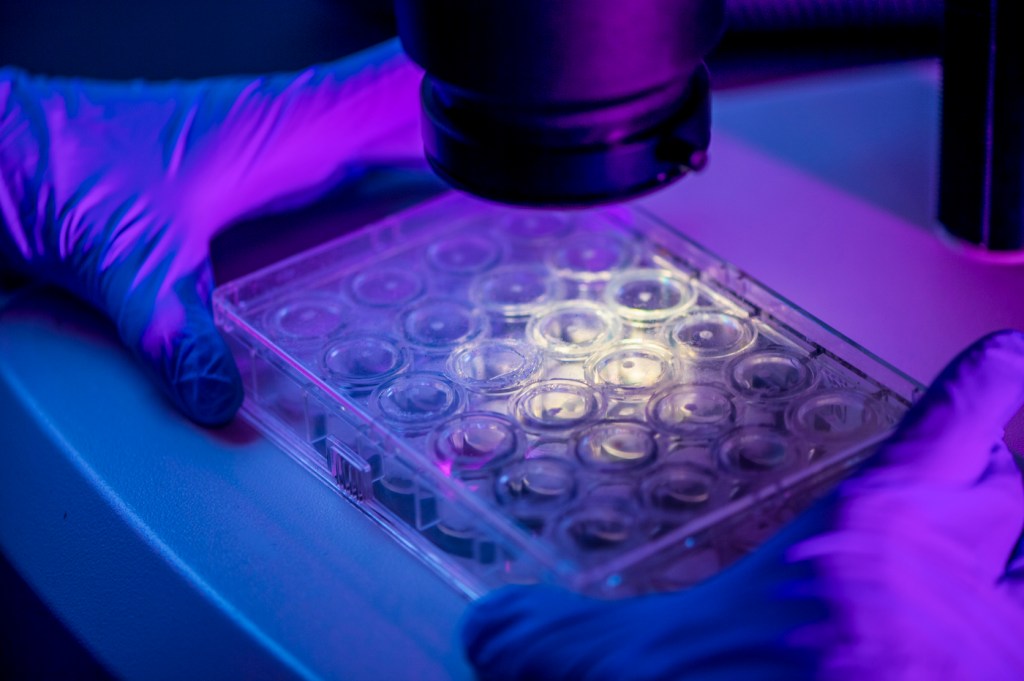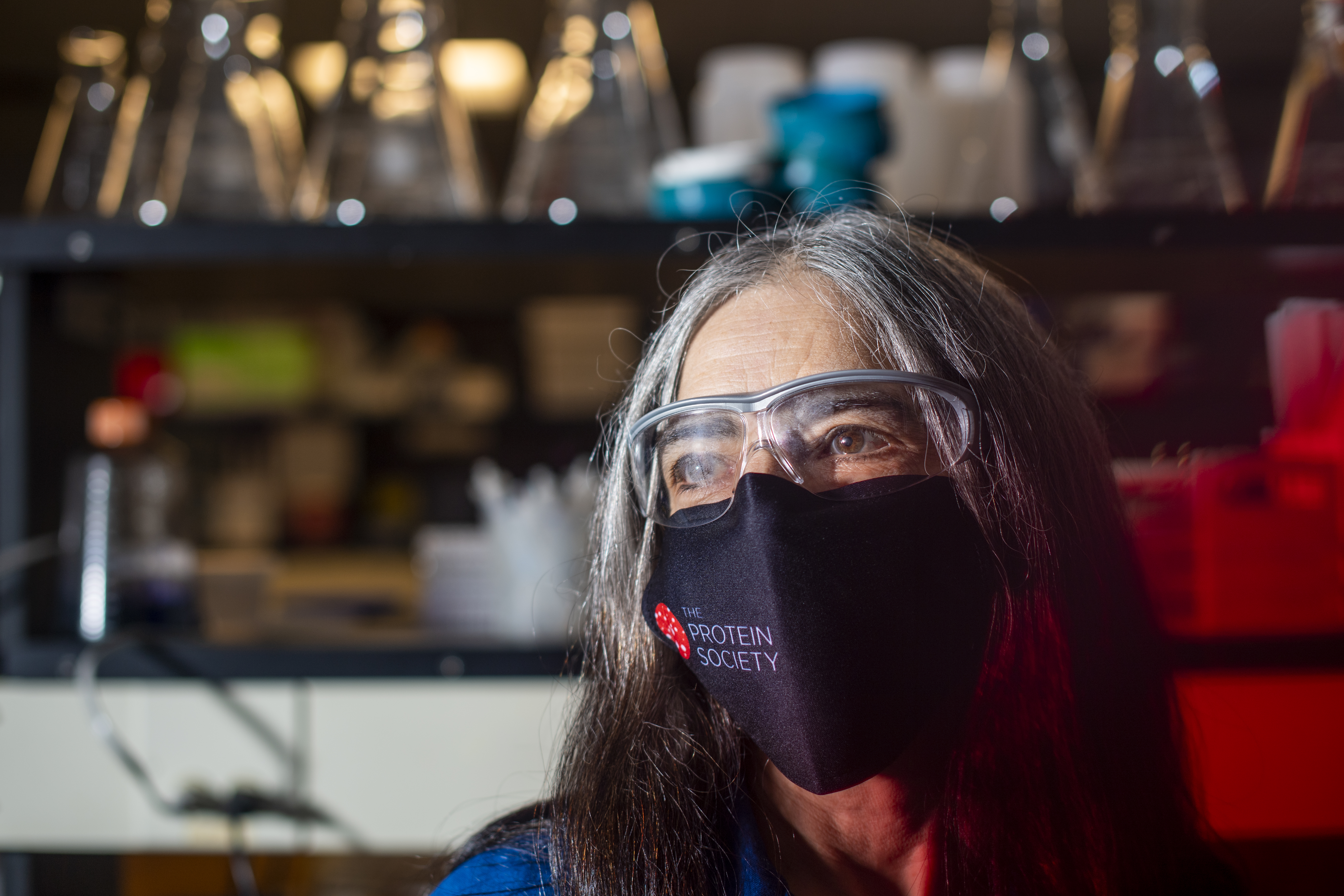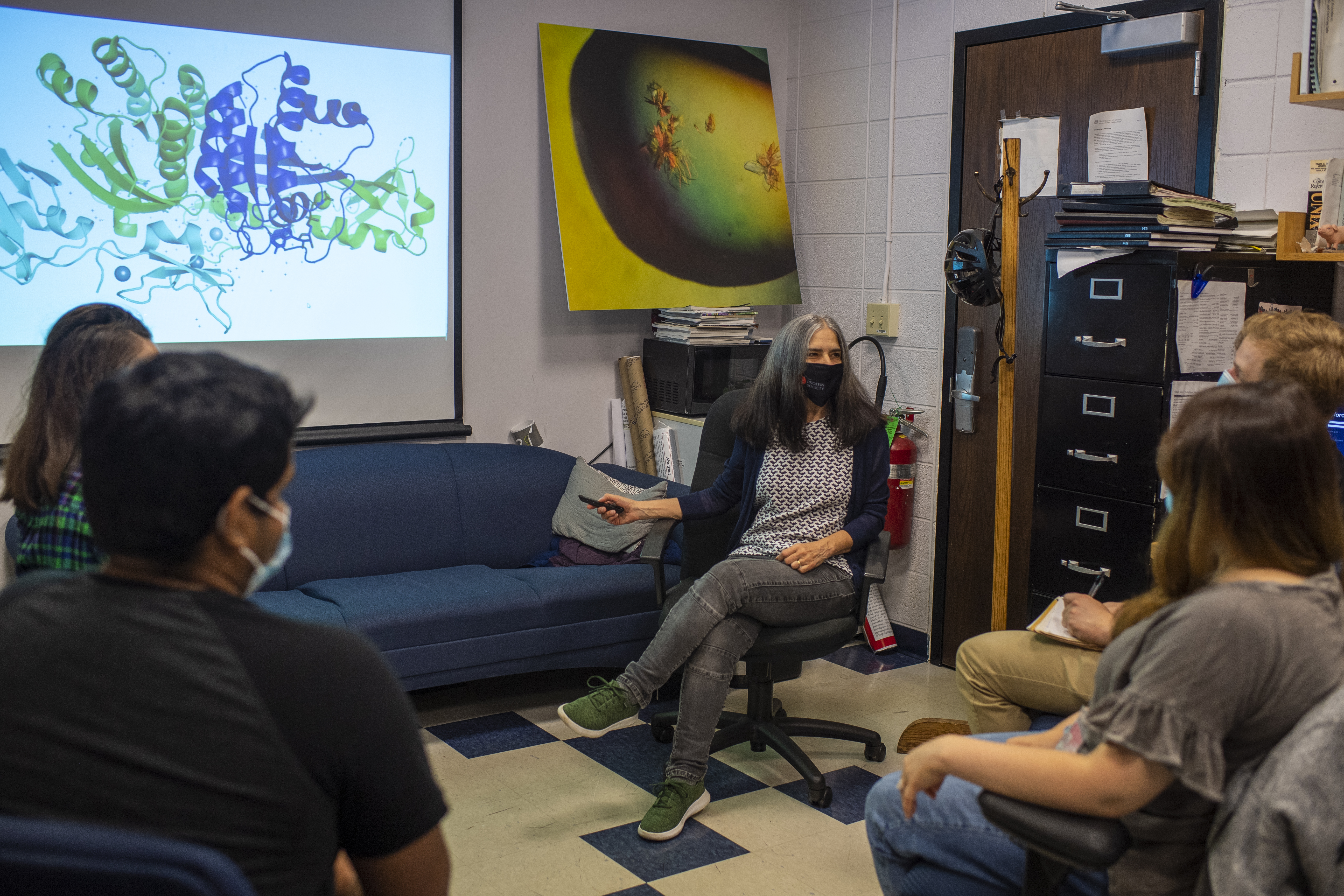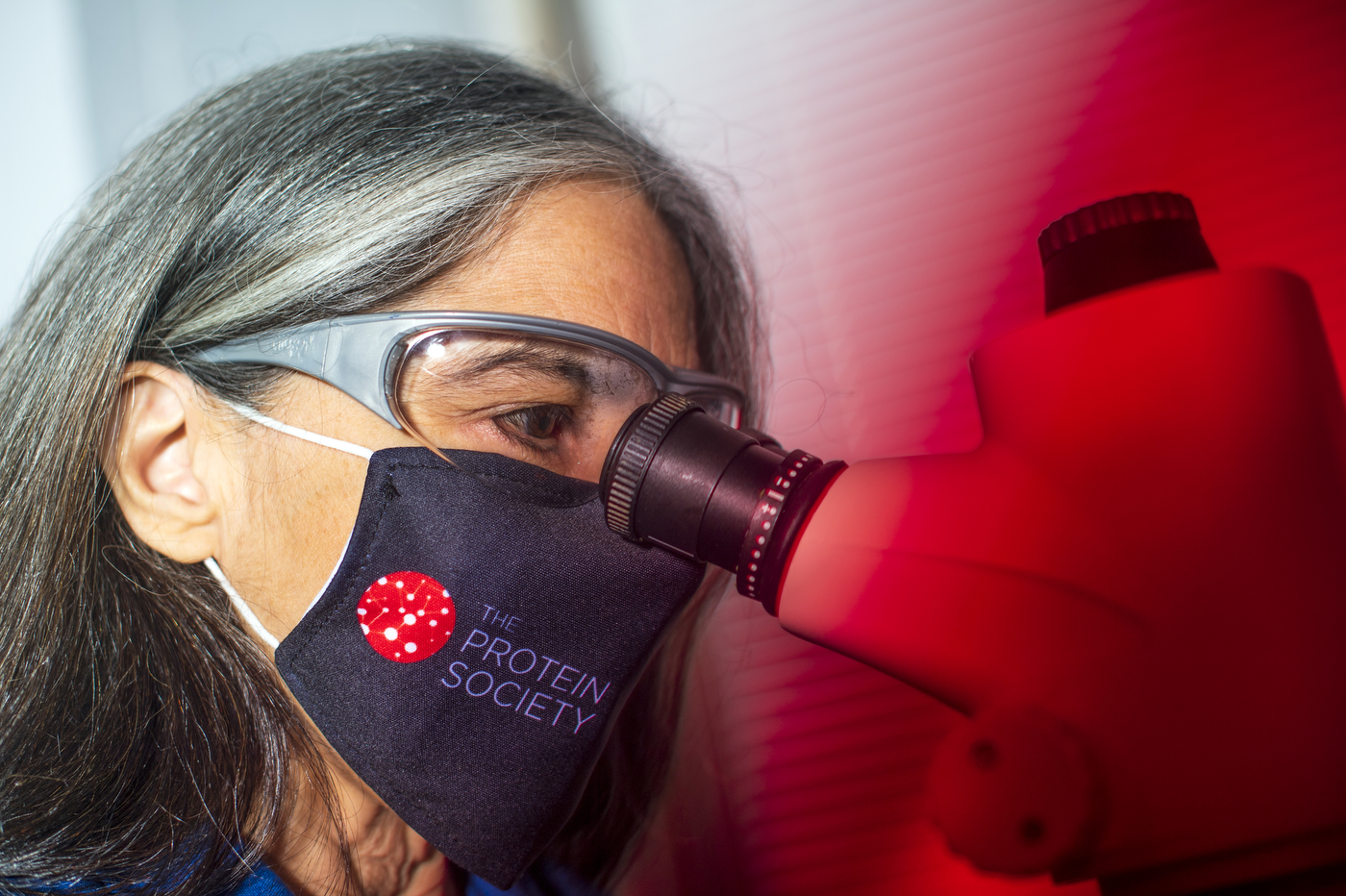This mysterious on-off switch holds clues to new cancer treatments

Within each of our cells, there’s an on-off switch that controls when cells divide and reproduce. The metaphorical finger that flips this switch is a protein called RAS. Under normal circumstances, RAS switches on to help our bodies repair wounds or replenish cells, to name a few of its functions. But sometimes, the switch gets stuck in the “on” position.
“When that happens, that uncontrolled proliferation, that’s a hallmark of cancer,” says Carla Mattos, a professor of chemistry and chemical biology at Northeastern who has been studying RAS for over 20 years.
“About a quarter of all human cancers have mutations in the RAS protein that turns the cell proliferation signal on and keeps it that way,” she says.
Scientists have known since the late 1980s that mutations on the RAS protein cause cancer, Mattos says. But in the decades since this discovery, cancer researchers have made little progress determining how to treat it.
Now, aided by funding from a recent National Science Foundation grant, the Mattos Lab will study how RAS works under normal circumstances in the hopes of eventually applying that information to cancer prevention and treatment research.

“Our project is not necessarily associated with disease. We’re looking at the natural processes of this protein and trying to understand how the ‘on state,’ is propagated,” she explains. “The ultimate goal is to make drugs that stop this type of cell proliferation. But the problem is, we don’t even know how RAS works normally.”
The behavior of RAS within a cell, or “in the wild,” so to speak, is still elusive to scientists because of limitations in the methods required to observe detailed interactions between molecules and atoms in the cell. Most of the information gathered about this protein at the molecular level is extrapolated from experiments with the isolated proteins or simulations of what scientists assume happens in cells based on what can be observed, Mattos explains.
The investigation into uncontrolled cell proliferation doesn’t end with the RAS protein, though. RAS, while functioning as an on-off switch for cell proliferation, works with another protein called RAF.
“On the molecular level, the mechanisms needed to understand how RAS and RAF work together have lagged behind,” she says. “But now we can build models of these molecules.”
The scientific community agrees that RAS and RAF must combine to send the RAS signal for cell proliferation, but just how many of either protein are required to do so is still unknown. The question might seem inconsequential, but Mattos says the answer has huge implications, not only for our general understanding of how cells propagate, but eventually, for the purpose of cancer therapies.



In an article published this year in Biomolecules, Mattos and her colleagues argue that a pair of RAF combines with a pair of RAS in order to activate the proteins necessary for cell proliferation, a hypothesis that runs contrary to the other dominant theory that a pair of RAF forms and combines with separate RAS proteins.
“Whether it’s one way or another will determine how we can interfere with the mutant proteins and eventually create drugs that can treat cancer,” she says.
For media inquiries, please contact media@northeastern.edu.





